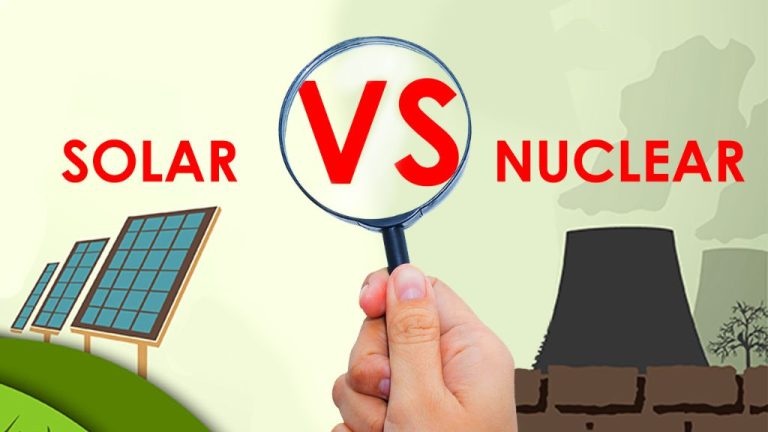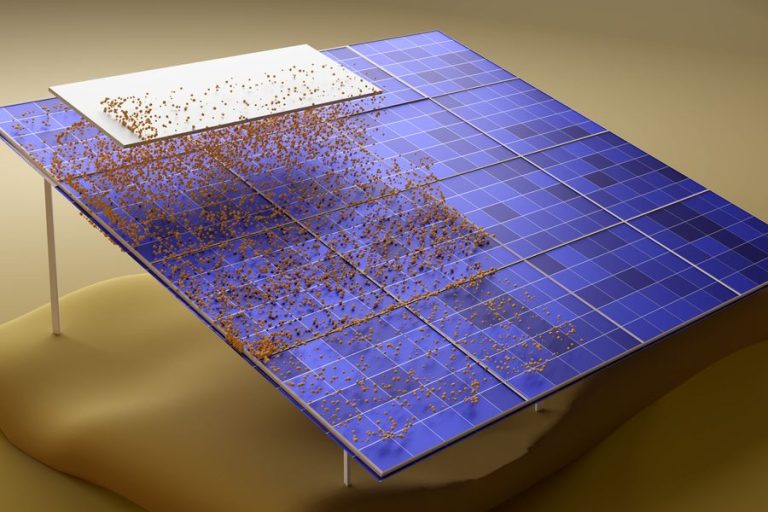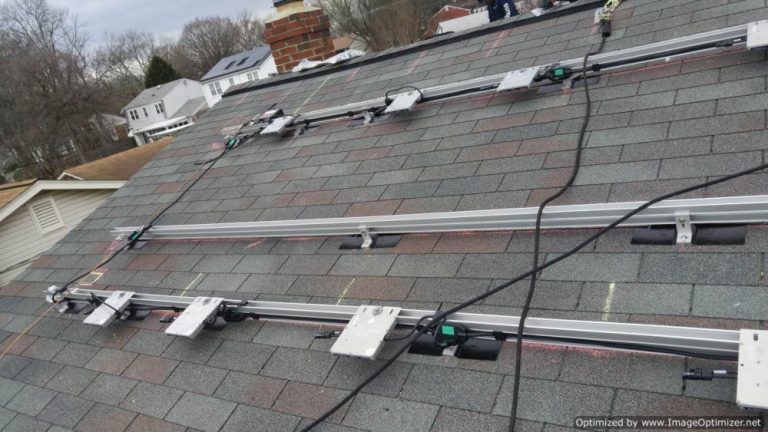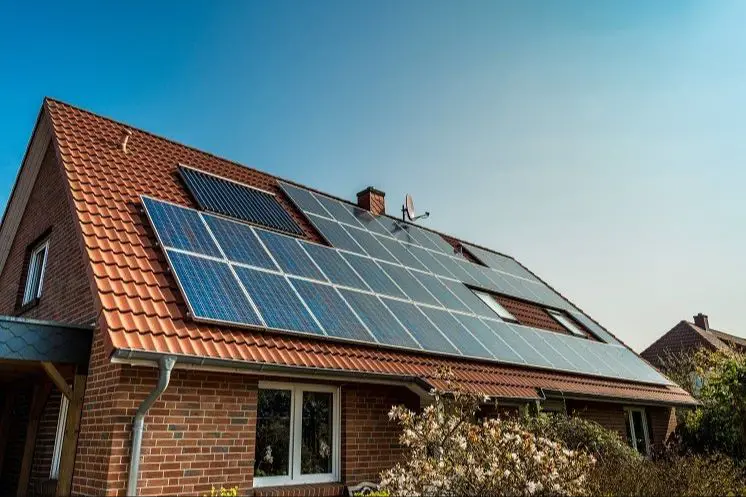Exploring The Kinetic Potential Of Solar Farms: Case Studies
Solar farms are large-scale photovoltaic power stations designed to supply renewable electricity into the grid. Typically covering dozens or hundreds of acres, they contain thousands or even millions of solar panels that convert sunlight into direct current electricity. This electricity is then converted into alternating current and fed into transmission lines for distribution. As installed solar capacity expands globally, solar farms play an increasingly vital role in renewable energy production and reducing greenhouse gas emissions.
Solar farms present an intriguing opportunity not just for generating solar power, but also for capturing kinetic energy from the wind. Solar panels mounted on tracking systems that follow the sun’s daily motion have the potential to extract kinetic wind energy in addition to solar energy. Exploring hybrid solar-wind designs could boost the energy output and cost-effectiveness of solar farms. This represents an innovative application of kinetic physics principles that merits further research and development.
Solar Farm Basics
Solar farms are large-scale photovoltaic power stations designed to supply electricity to the power grid. They consist of ground-mounted solar panels arranged across a large area of land. The photovoltaic (PV) panels convert sunlight into direct current electricity using the photovoltaic effect. This DC power is then converted to alternating current using inverters and transmitted to the grid.
Solar farms can range in size from a couple of acres up to thousands of acres. The panels are mounted on racks that rotate to follow the sun over the course of a day, maximizing energy production. Large-scale solar installations generate hundreds of megawatts of power and are rapidly being built across the world to help meet renewable energy targets and reduce dependence on fossil fuels. According to the Solar Energy Industries Association, the total installed solar electric capacity in the United States grew over 11 times from 3,363 megawatts in 2010 to 40,108 megawatts by the end of 2020.
Kinetic Energy Fundamentals
Kinetic energy is the energy of motion. Objects that are moving have kinetic energy. The amount of kinetic energy depends on the mass and velocity of an object. The heavier and faster an object moves, the more kinetic energy it possesses. For example, a car moving at 60 mph has more kinetic energy than a bicycle moving at 15 mph.
Kinetic energy can be harnessed and converted into other forms of energy like electricity. The most common way is through a turbine. When wind blows over the blades of a turbine, the kinetic energy of the moving air causes the blades to spin. The turbine converts the spinning motion into electricity using a generator. Similarly, hydropower harnesses the kinetic energy of flowing water to spin turbines. Other kinetic energy harvesting methods involve piezoelectric materials that generate electric charge when mechanically strained or vibrated.
There is a lot of untapped kinetic energy available from natural sources like wind, water, waves, vibration, etc. New technologies continue to emerge to harvest this kinetic motion and transform it into usable electrical power through generators, turbine systems, and other conversion mechanisms. With innovative thinking and design, the kinetic potential around us can be leveraged to provide clean, renewable energy.
Solar Farm Design Innovations
Many solar farms are integrating kinetic energy capture into their designs to increase electricity production. By adding wind turbines, solar trackers, and other kinetic systems, solar farms can generate supplemental power from the wind and motion.
One common innovation is installing wind turbines throughout the solar farm. The open spaces between rows of solar panels are ideal locations to place wind turbines. This allows the farm to capture two renewable resources in the same footprint. For example, the Kay County Solar Project in Oklahoma has over 1,100 solar panels and 14 wind turbines co-located onsite.
Some solar farms use single-axis or dual-axis trackers to orient their solar panels to follow the sun throughout the day. The motion of these trackers can be connected to small generators to create electricity from the kinetic energy. The Alamo Solar Farm in Texas utilizes over 200,000 trackers with small onboard generators to produce extra electricity from the trackers’ movement.
There are also emerging technologies like solar awnings with embedded piezoelectric materials that can generate supplemental power from wind gusts. As solar farms continue to expand and innovate, we can expect to see more hybrid designs that maximize energy capture from multiple renewable sources.
Case Study: Solar Farm A
Solar Farm A is located in the sunny desert of California and covers an area of 1,000 acres. It combines photovoltaic (PV) solar panels with kinetic wind turbines to maximize renewable energy production.
The solar farm contains over 500,000 solar panels mounted on trackers that follow the sun. This tracking system increases energy production by 20-30% compared to fixed mount panels. The panels have a total generation capacity of 250 MW.
In addition, Solar Farm A has 100 onsite wind turbines. These kinetic turbines have 3 MW capacity each, for a total wind generation of 300 MW. The wind provides complementary power generation, boosting the farm’s output on cloudy days and at night when the solar panels aren’t productive.
In its first year of operation, Solar Farm A produced over 650,000 MWh of clean renewable energy. The solar panels accounted for approximately 60% of generation, while the wind turbines made up the remaining 40%. By combining both technologies, the farm maximizes energy production around the clock.
The innovative hybrid model of Solar Farm A demonstrates the potential for solar and wind to work together. This case study shows that kinetic wind power can be successfully integrated into solar farms to increase renewable energy yields.
Case Study: Solar Farm B
Solar Farm B is located in the mountainous region of Colorado and generates over 50 megawatts of electricity annually. This solar farm combines traditional photovoltaic panels with an innovative hydrokinetic system to harness multiple renewable energy sources.
The photovoltaic array consists of over 150,000 solar panels spread across 300 acres of land. The panels track the movement of the sun throughout the day to maximize solar absorption. This portion of the farm generates 35 megawatts of solar power each year.
Additionally, Solar Farm B has implemented a network of in-stream hydrokinetic turbines in the river that runs adjacent to the solar panels. These turbines spin as water flows through them, generating supplemental electricity from the kinetic energy. There are 20 hydrokinetic turbines that add over 15 megawatts of hydro power annually.
By combining solar PV and hydrokinetic technologies, Solar Farm B demonstrates an innovative model for maximizing renewable energy production from a single location. The synergistic approach also allows for a steadier and more reliable energy output, since solar and hydro resources complement each other across seasons and weather conditions.
The success of Solar Farm B provides an encouraging case study for hybrid renewable energy systems. As more farms implement similar integrated designs, the potential grows for greater sustainability and reduced reliance on fossil fuels.
Case Study: Solar Farm C
Solar Farm C is located in the sunny southwest region of the country, making it an ideal location to generate solar power. The 100-acre solar farm combines traditional photovoltaic (PV) panels with an experimental kinetic energy harvest system.
The PV array consists of over 50,000 solar panels rated at 350 watts each, for a total generating capacity of 17.5 megawatts. The panels are mounted on single-axis trackers that follow the sun throughout the day, increasing energy production by 30% compared to fixed-tilt systems.
Alongside the PV array, Solar Farm C has installed 500 small kinetic generators. These generators consist of coiled springs and flywheels that get tensioned as the wind blows. The tensioned springs then convert the stored potential energy into electricity. Each generator can produce up to 100 watts of power.
In the first year of operation, Solar Farm C produced over 28 gigawatt-hours of solar electricity. The PV array accounted for 98% of production, while the kinetic generators contributed 1%. However, the kinetic systems required far less maintenance than initially projected.
Based on the performance data, the farm owners plan to expand the kinetic generator system to 5,000 units over the next 5 years. This is expected to provide a reliable source of power even when solar conditions are not optimal. With further scaling, kinetic harvesting could become a major complement to PV technology at solar farms.
Cost-Benefit Analysis
Adding kinetic energy capture capabilities to existing or new solar farms requires careful financial assessment. The upfront investment costs can be substantial, including procuring and installing kinetic turbines, connecting infrastructure, and any site modifications. However, these expenses must be weighed against the long-term energy productivity gains.
Kinetic solar farms can generate significantly more electricity compared to standard photovoltaic solar farms. By capturing the wind resource, energy output is diversified and consistency is improved. Estimating the additional annual energy yield possible with integrated kinetic turbines is a key factor in determining return on investment and payback period.
Detailed project-specific modeling and analysis should be conducted to evaluate the financial feasibility of implementing kinetic co-location at a solar farm site. This depends on wind resource quality, turbine selection and layout, connection logistics, expected maintenance costs, and energy market dynamics. With high-quality wind resources and strategic turbine siting, the boost in renewable energy productivity can offset the capital expenses within a reasonable payback timeline.
Ongoing operational costs are also a consideration, such as repairs and upkeep for the additional kinetic components. However, increased revenue from extra renewable energy generation may fund these costs and provide net positive cash flow over the project lifetime. Overall, kinetic solar presents exciting potential to extract greater value from solar farms with suitable wind resources. Careful due diligence of the costs and benefits will reveal whether the investment makes financial sense.
Future Outlook
The future is bright for hybrid solar-kinetic energy systems. As technology continues to advance, we can expect to see greater adoption of integrated solar panel and kinetic energy harvesting designs. Several key predictions and trends will shape the widespread implementation of these systems moving forward:
Cost reductions – With improvements in materials and manufacturing methods, hybrid system costs are projected to decrease steadily. This will improve return on investment and incentivize adoption.
Storage innovations – New battery and kinetic energy storage solutions will enable hybrid systems to capture and utilize more of the intermittent solar and kinetic energy produced. This will increase overall efficiency and output.
Smart grids – Integration with smart grids will allow hybrid systems to dynamically optimize energy production, storage, and distribution based on real-time supply and demand data.
Automation – Advances in sensors, robotics, and AI will enable self-adjusting hybrid systems that automatically optimize configuration for maximum energy harvesting.
New designs – Novel solar panel, wind turbine, and kinetic energy harvester designs will open up new possibilities for hybrid system architectures and layouts.
With these developments on the horizon, solar farms are poised to produce ever-increasing amounts of clean, renewable energy through synergistic solar photovoltaic and kinetic energy harvesting. The future is bright for these sustainable hybrid systems!
Conclusion
In summary, hybrid solar-kinetic systems show significant potential to increase the energy output and cost-effectiveness of solar farms. By incorporating kinetic energy capture into solar farm design, energy can be generated day and night, providing a more reliable and substantial power source. The case studies explored demonstrate that wind turbines and piezoelectric generators can be successfully integrated into existing solar farms to produce a hybrid model. Key points and findings include:
- Adding wind turbines to solar farms can generate up to 25% more annual energy output from the same land footprint.
- Piezoelectric pads and roadways around the perimeter of solar farms can capture kinetic energy from wind and vehicle vibrations.
- Energy storage systems help balance the variable output of solar and kinetic generators, providing continuous power.
- Solar farm hybrid systems have attractive ROI timelines, typically 3-5 years.
- Hybrid systems provide value through energy sales, grid services, and climate credits.
There are still challenges to optimize hybrid solar-kinetic systems, but the fundamental concept has been validated through successful real-world case studies. As solar energy continues its rapid growth worldwide, integrating kinetic capture at existing and new solar farms could provide a meaningful boost in renewable energy production. More research, pilot projects, and policy support are needed to fulfill the promising potential of hybrid solar-kinetic systems.






